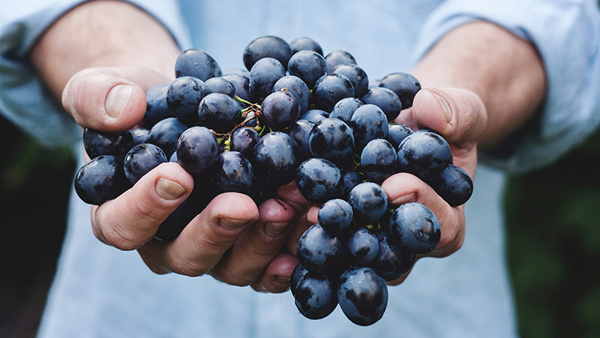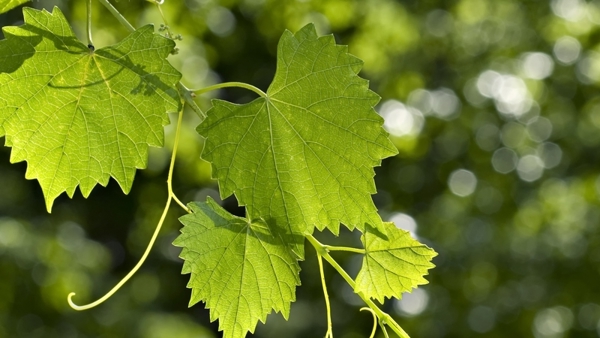Yates Account
Join now
Create a Yates account today!
Sign up to join the Yates Garden Club for monthly e-mails packed with seasonal inspiration, tips for success & exclusive promotions.
Plus if you’re a Garden Club member you can take part in the Yates Growing Community - a blog to share successes, get advice & win prizes in fun challenges along the way!

Forgot password
Enter the email address associated with your account, and we'll email you a new password.

Oh, what bundles of joy grapes can be! Eaten fresh, dried into sultanas or frozen and blended into a refreshing icy drink, they’re the perfect summer-time snack. And they’re quite easy to grow too, provided you have the space. Grapes (Vitis vinifera) grow on long-lived vines, which require strong support to grow up and long, like a trellis or pergola. They can grow up to 4m tall and wide, so ensure you give them plenty of room. Look after them well and they’ll reward you with fruit after 3 years.
How to grow Grapes in a garden
- Choose a sunny spot with well-drained soil and a strong support structure, such as a pergola, sturdy fence or trellis. Enrich the soil with Yates Dynamic Lifter Organic Plant Food. If the soil is clay based, add gypsum and fork in well.
- Dig the planting hole twice as wide and to the same depth as the root-ball. Remove the plant from the container, gently tease the roots and cut away any circled or tangled roots.
- Position in hole and backfill with soil, gently firming down. Form a raised doughnut shaped ring of soil around the outer edge of the plant's root zone. This helps keep water where it's needed. Always water in well after planting to settle the soil around the roots and keep the soil moist for several weeks while the new plant establishes.
- Mulch around the base with organic mulch like bark chips, woodchip or pea straw, keeping it away from the trunk.
- Water deeply, once or twice a week, depending on weather conditions. While grapes are drought tolerant once established, they will benefit from regular watering during flowering and fruiting. Ensure the vine is well watered during spring and summer.
- During the growing and flowering/fruiting season, feed with Yates Thrive Citrus Fruit Granular Plant Food. Throughout the year, apply Yates Thrive Fish Blood & Bone Plant Food Concentrate.
- Early training and regular pruning will help maximise the harvest.


How to grow grapes in a pot
Grapes can be grown in large pots as long as there is a strong support structure such as a fence or trellis to grow over.
- Choose a pot at least 600mm wide. Position in full sun and partially fill with quality potting mix, such as Yates Premium Potting Mix.
- Remove the plant from the container, gently tease the roots and cut away any circled or tangled roots.
- Position in pot and backfill with potting mix, gently firming down. Water in well.
- Water deeply, once or twice a week, depending on weather conditions. While grapes are drought tolerant once established, they will benefit from regular watering during flowering and fruiting. Ensure the vine is well watered during spring and summer.
- During the growing and flowering/fruiting season, feed with Yates Thrive Natural Citrus & Fruit Plant Food Concentrate.
- Early training and regular pruning will help maximise the harvest.
Growing tips
Grapes will grow in most climates. Check the plant label before buying to see if its suitable for your area.
- Varieties like yellowish-green ‘Thompson Seedless’ and pale red ‘Crimson Seedless’ are very popular, as is seeded ‘Red Globe’.
- After one year, prune off all the new growth, except for one shoot, which should be cut back to just two buds. This will help create a strong trunk to support future growth.
More Plants
Tart and sweet, blackcurrant and redcurrant fruit have a short summer season, so grab them while you can.
Strawberry
Strawberries happily grow in raised garden beds, in the garden, in pots or even hanging baskets. Eat them fresh, cooked or make into jams.
Apples
Apples can grow into large trees, but you can also find dwarf forms. Be sure to find a self-fertile variety or two which can cross-pollinate.
Makrut Lime
Makrut lime trees are grown for their aromatic leaves and zesty fruits. Mostly used in dishes such as curries, soups, stir-fries, beverages and desserts.
Yates Thrive Citrus & Fruit Granular Plant Food
Fast acting, gradual feeding plant food specially formulated to grow citrus & fruit trees, with high potassium for more abundant fruit & added magnesium to help prevent leaf yellowing.
Yates Dynamic Lifter Organic Plant Food
Releases nutrients slowly, improves the structure and moisture retention of the soil and encourages earthworms and beneficial soil micro-organisms.
Yates Thrive Natural Citrus & Fruit Plant Food Concentrate
Specially developed for boosting healthy yields of juicy fruit in citrus & other fruiting plants. Feeds through both leaves and roots for fast results.
Yates Premium Potting Mix
A premium potting mix, ideal for all potted plants and shrubs, including ornamentals, fruit trees, vegies and herbs.
















Share
Share this article on social media